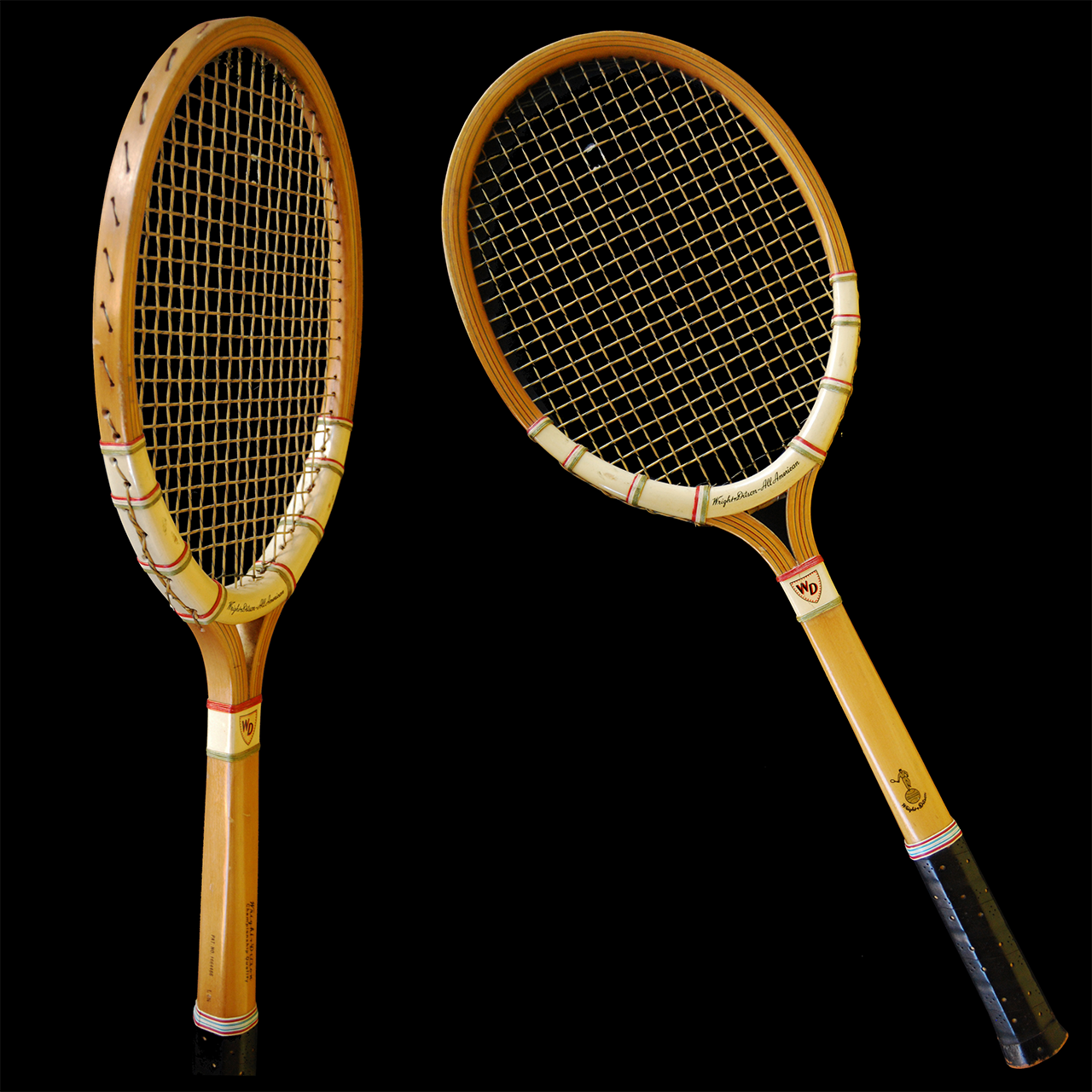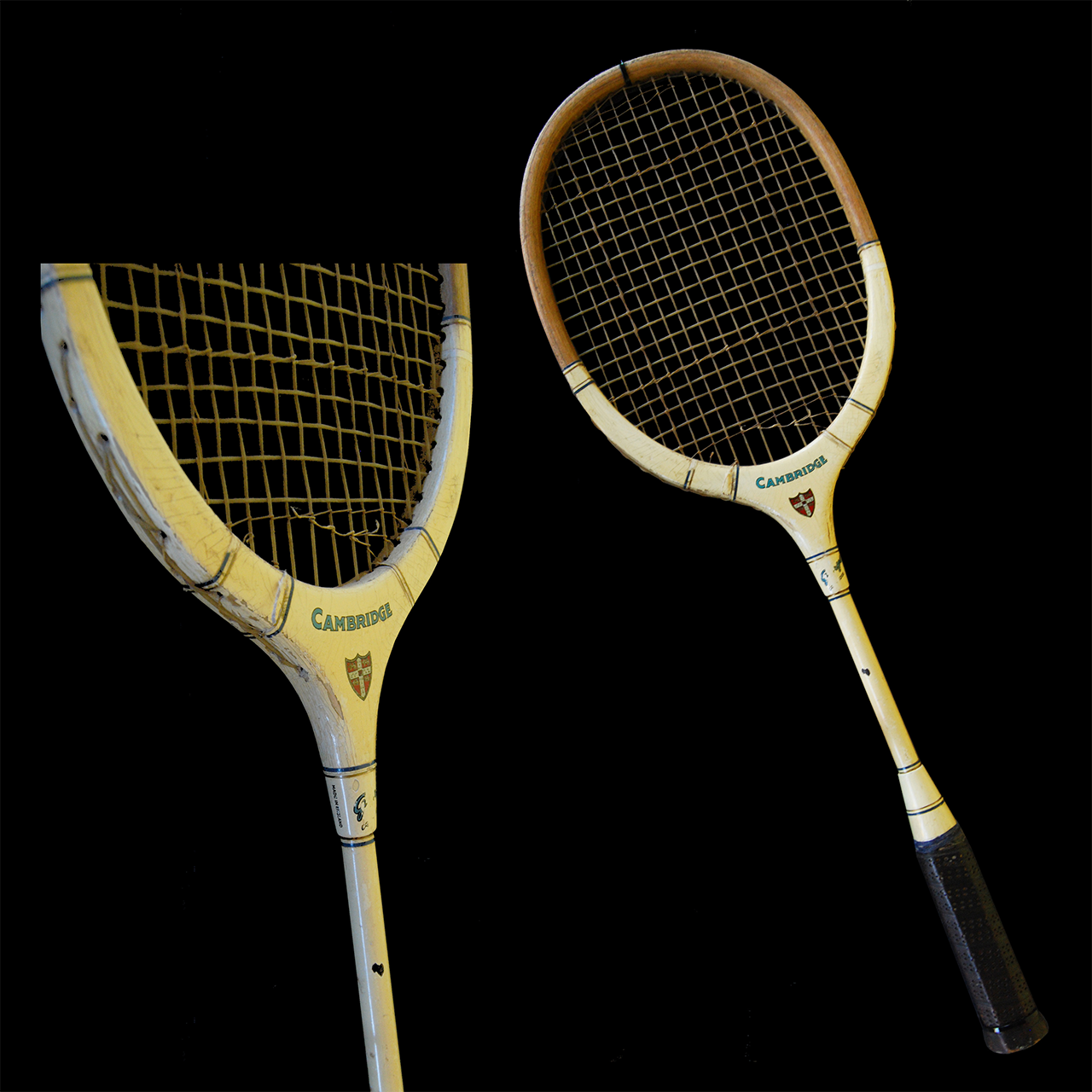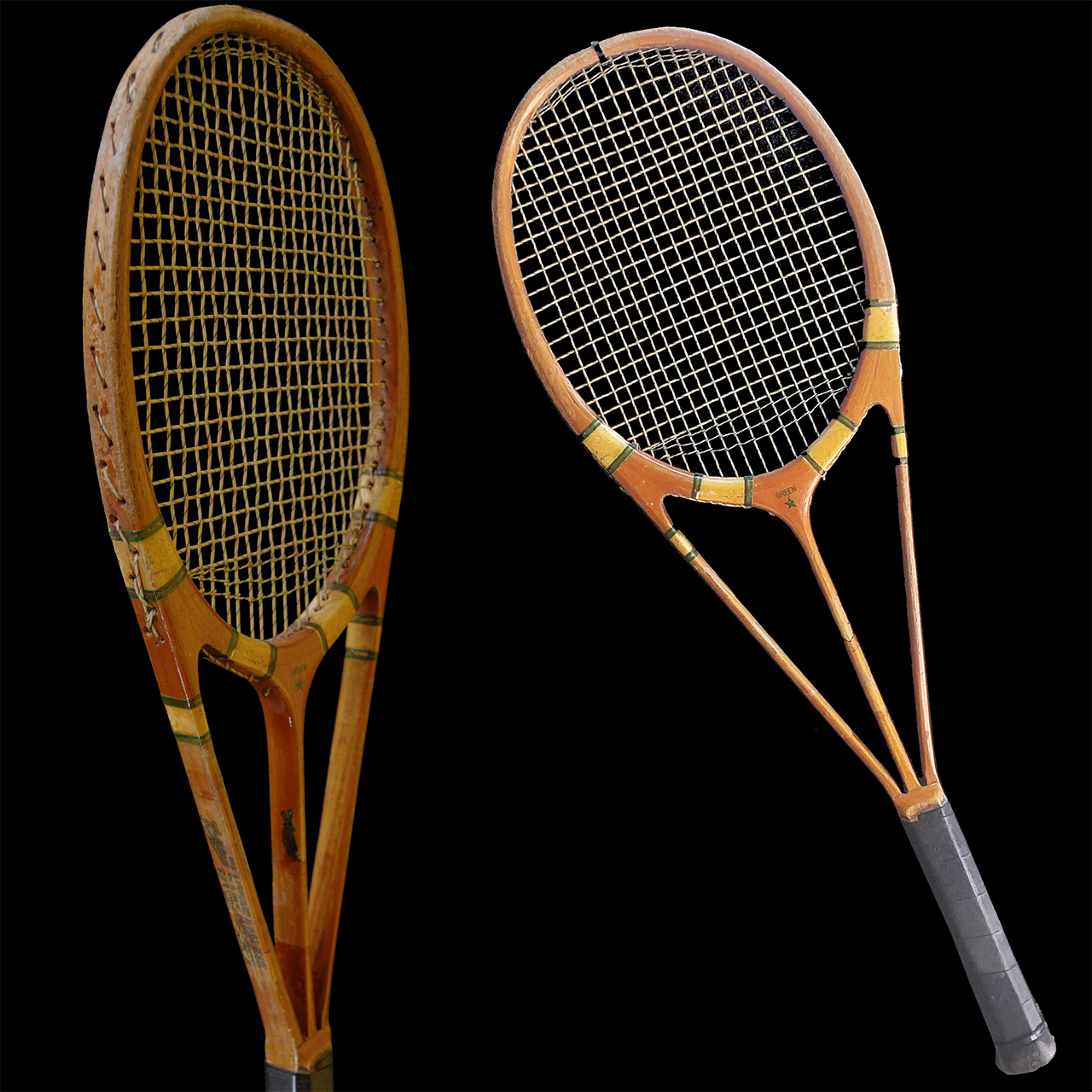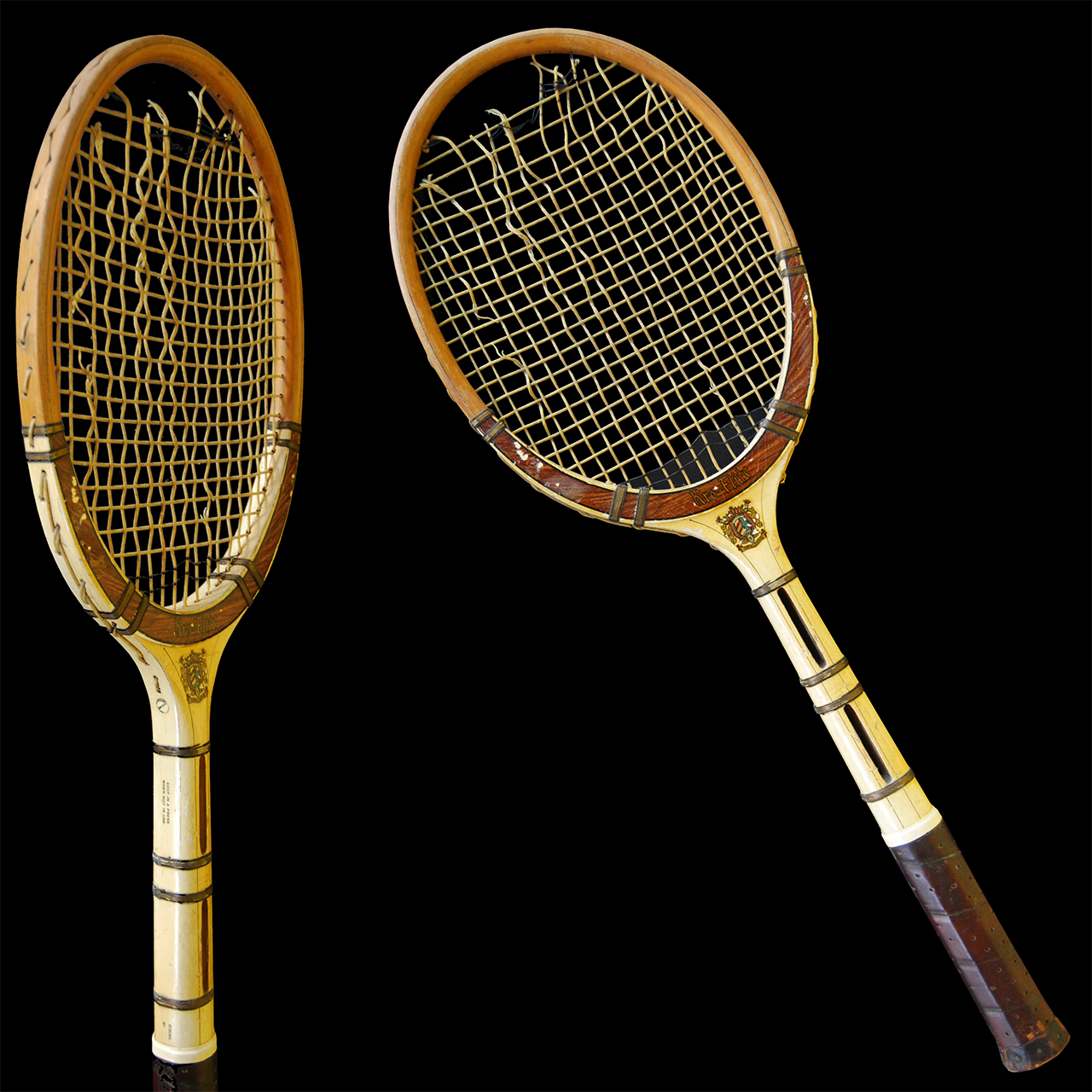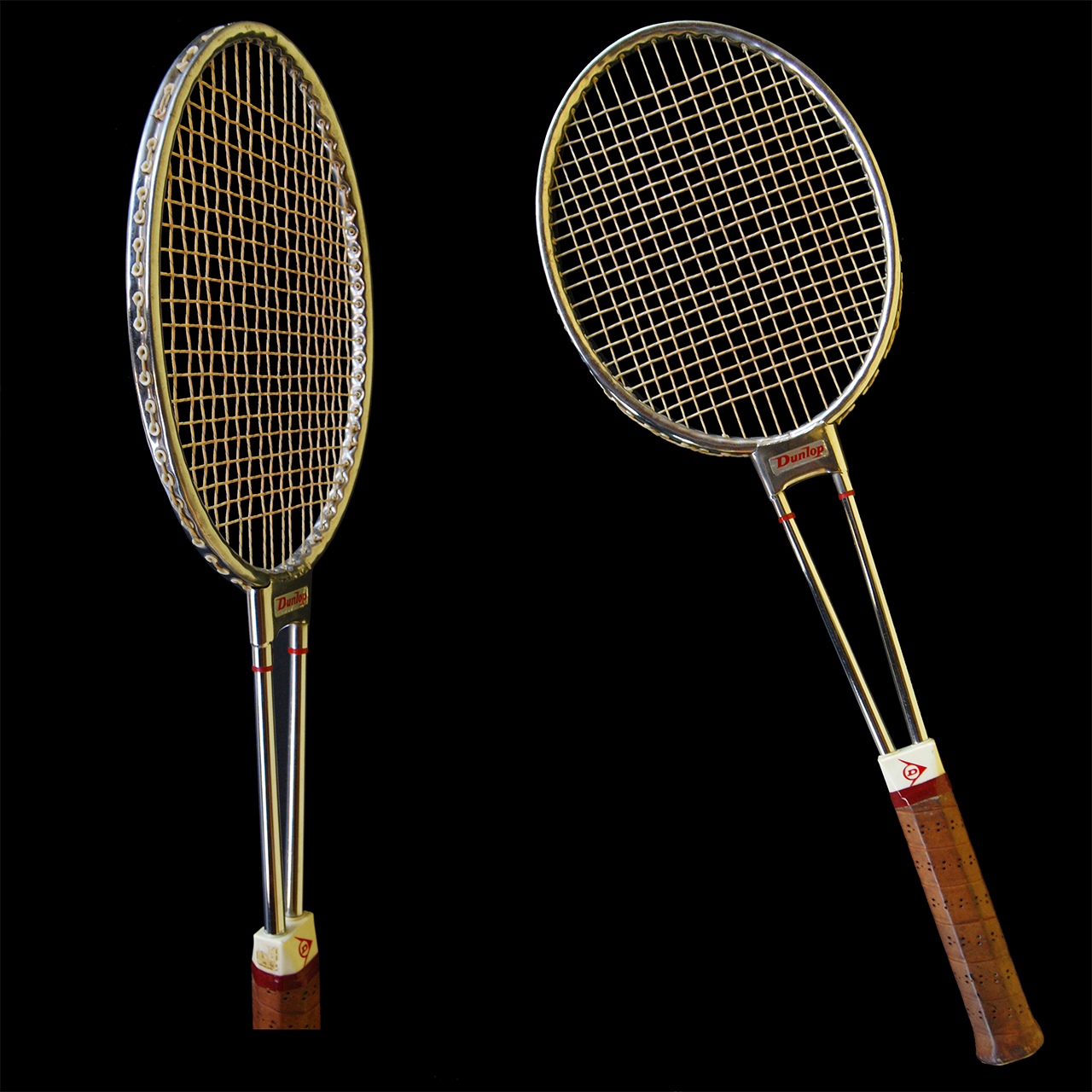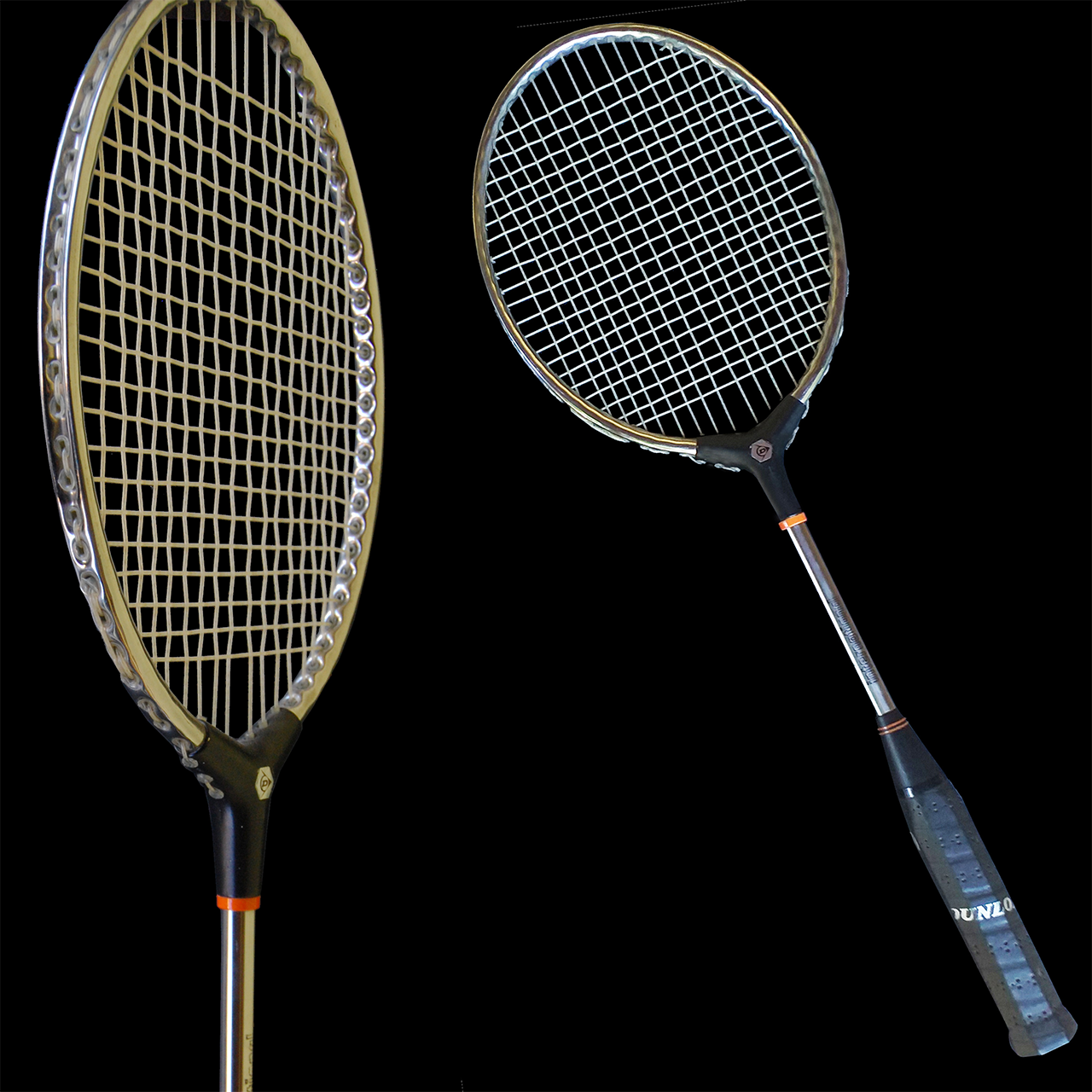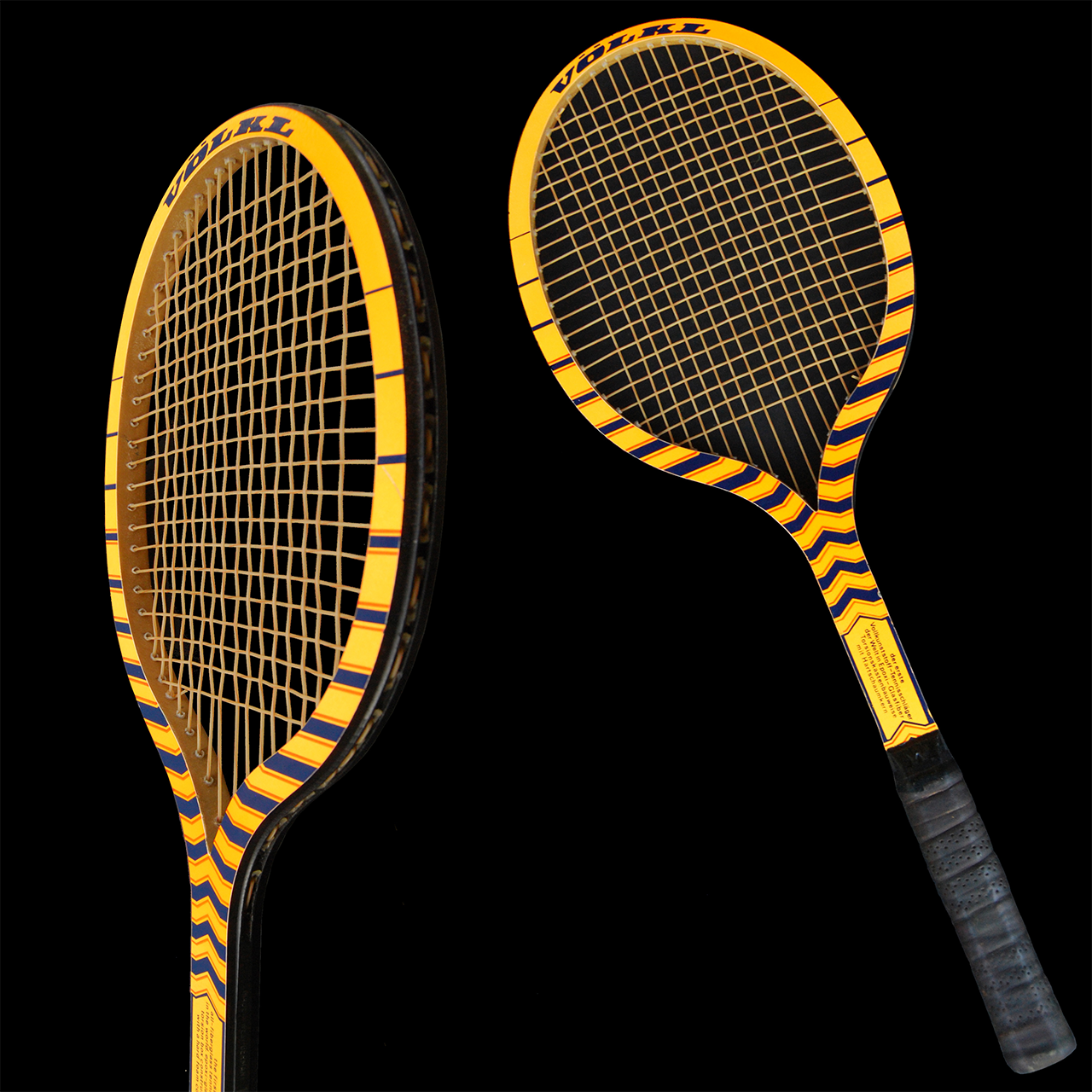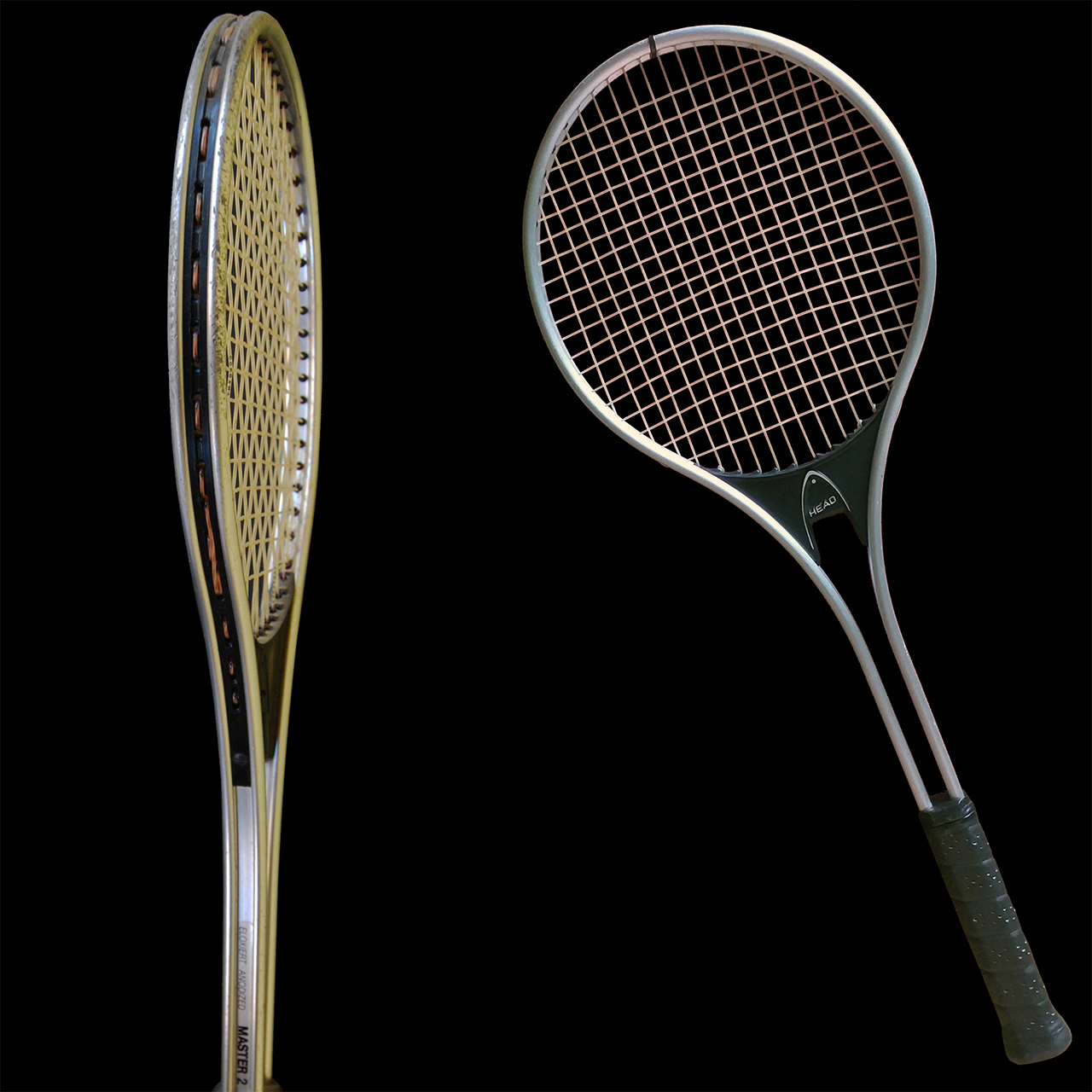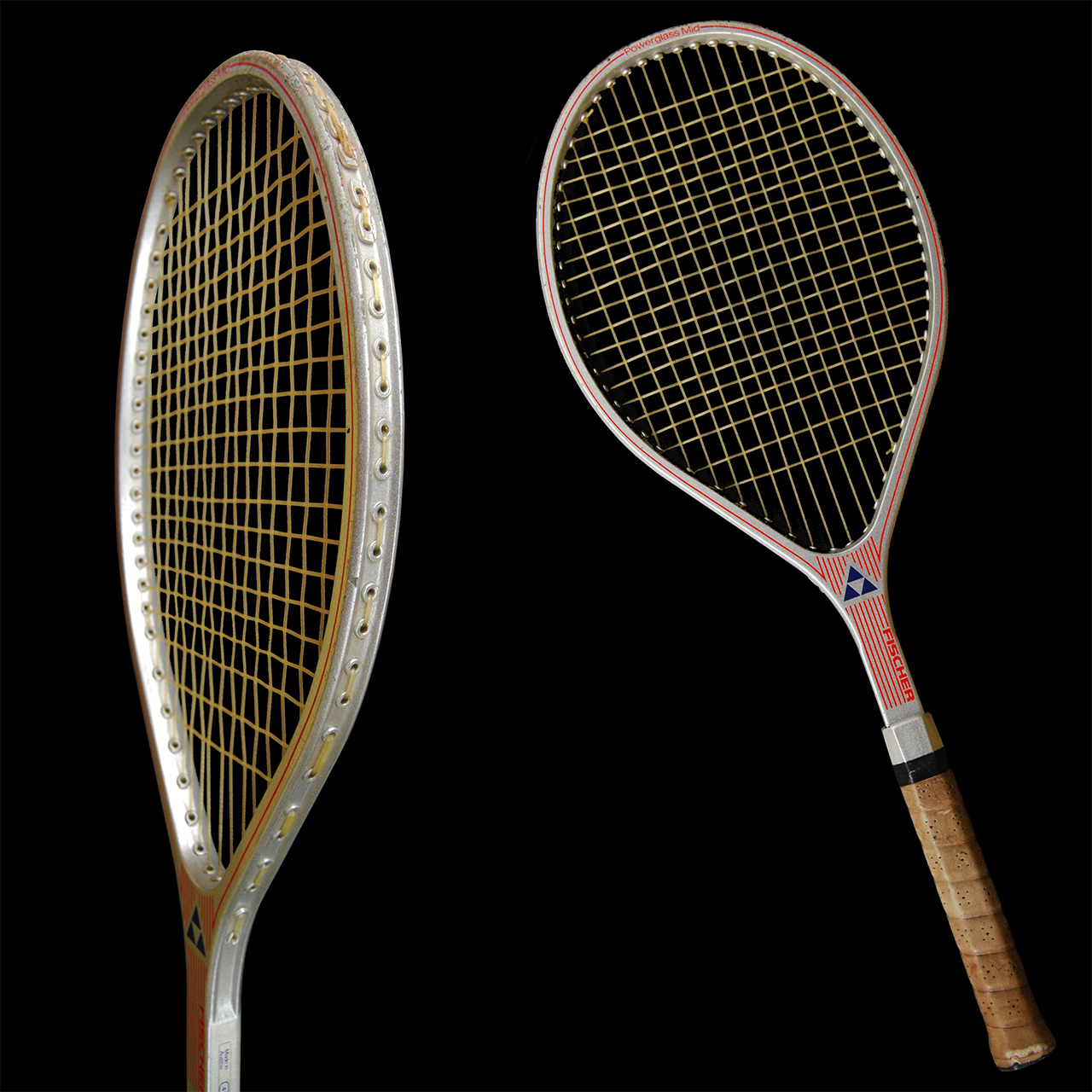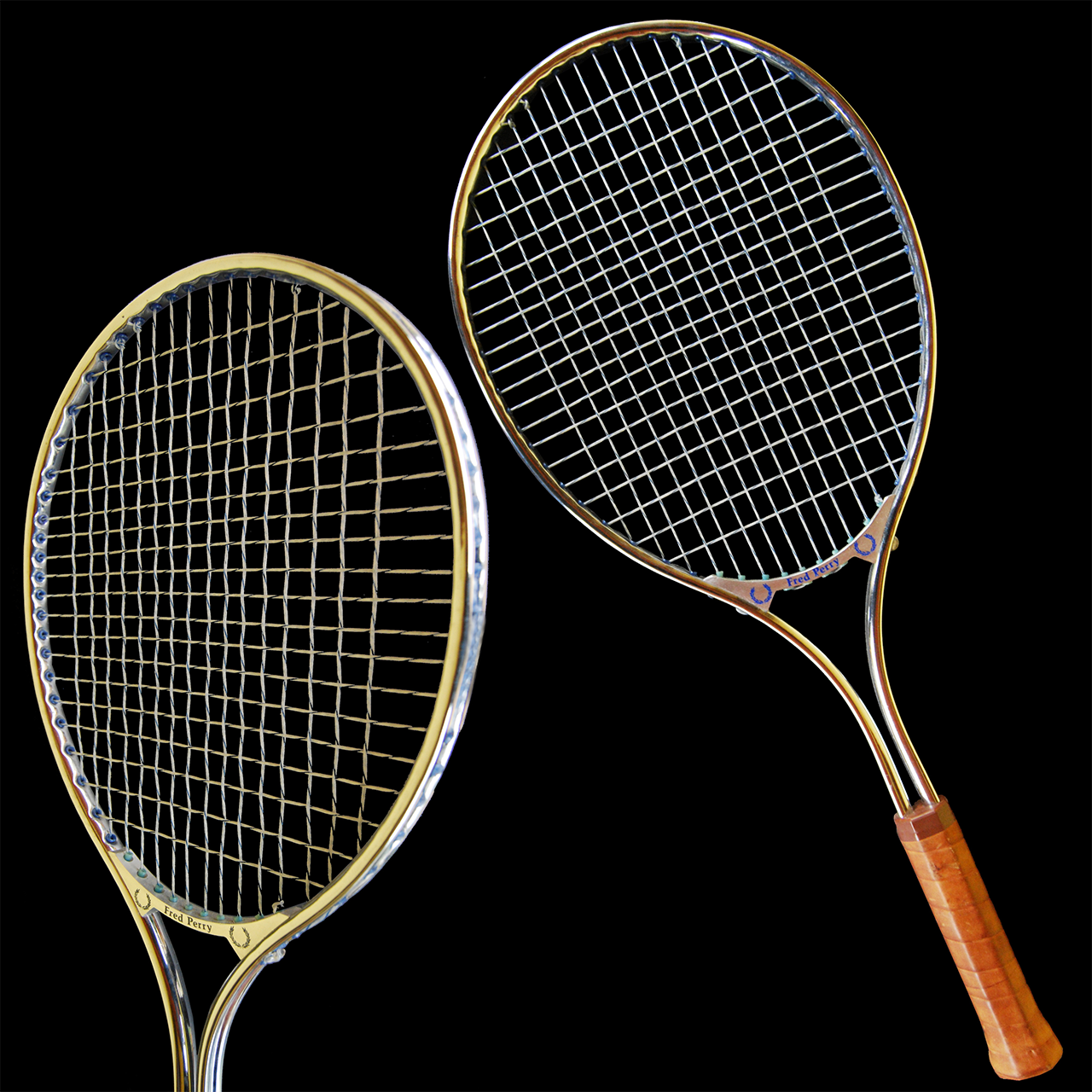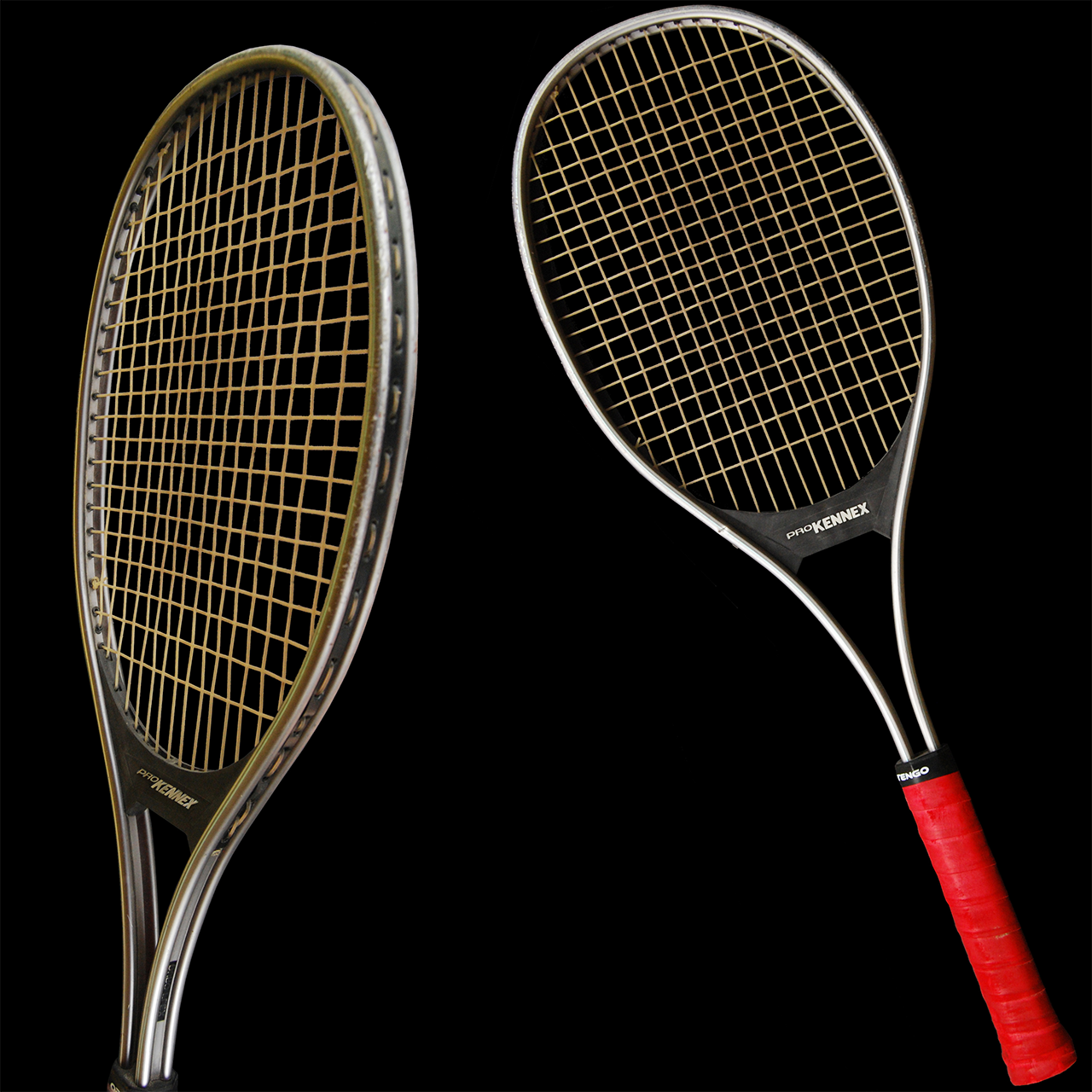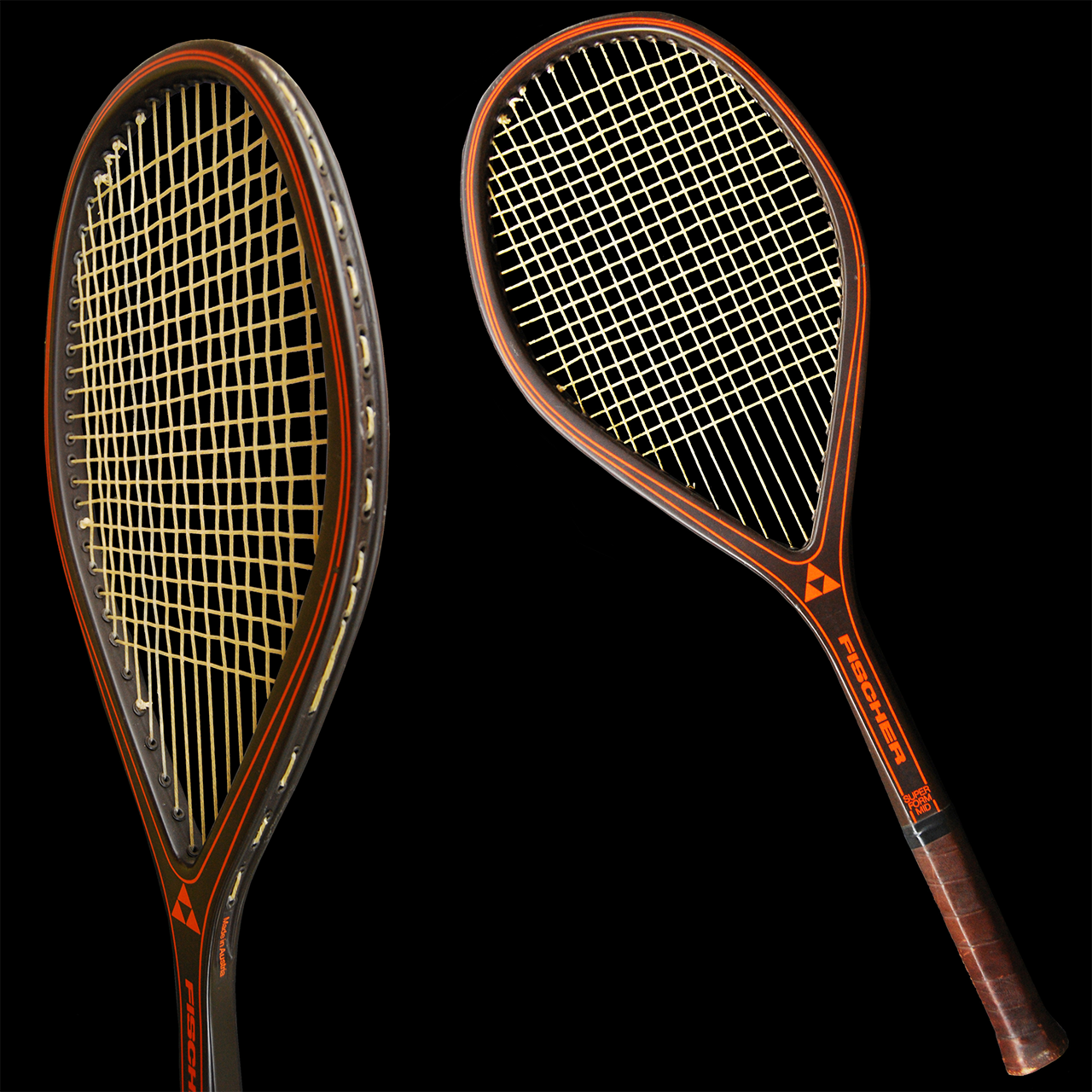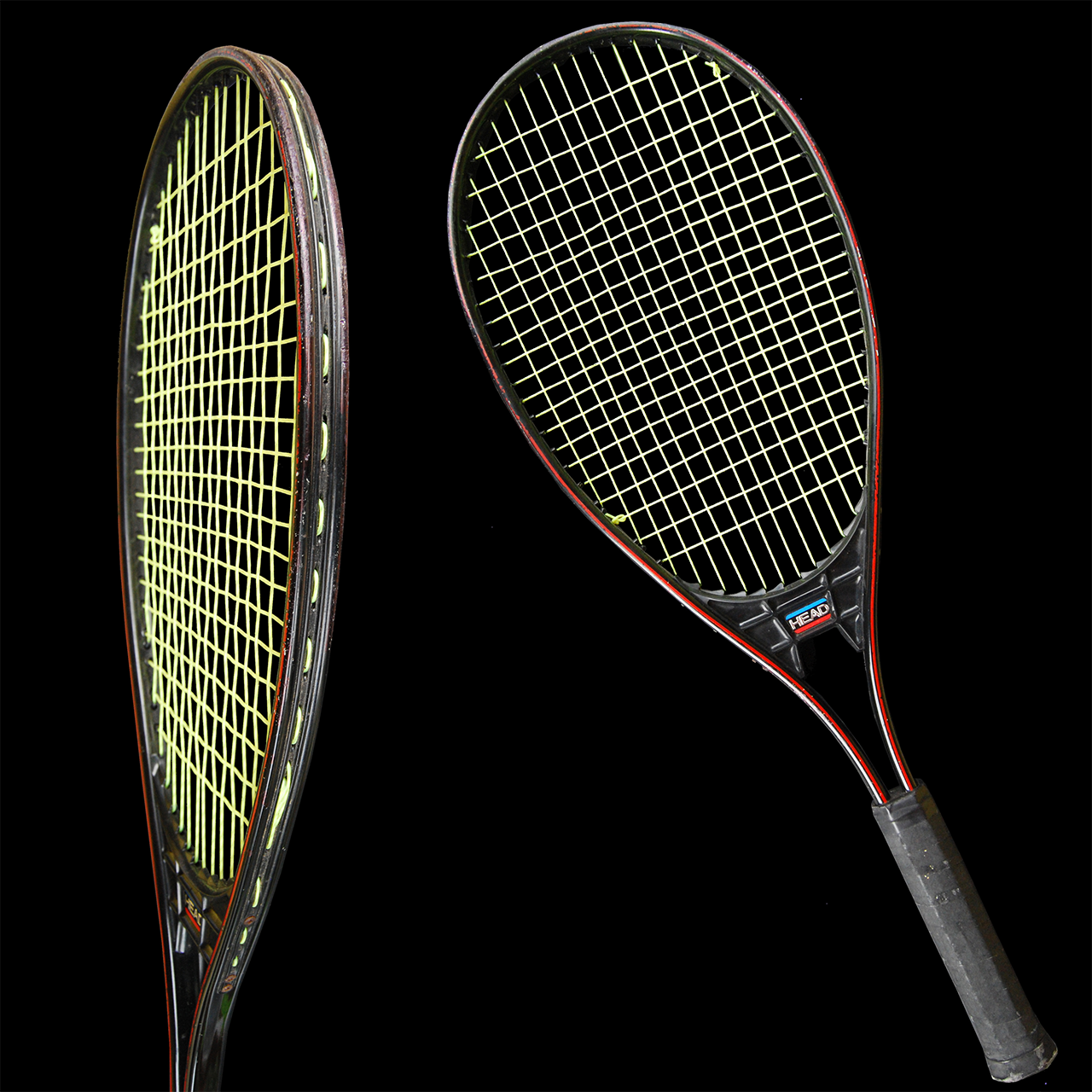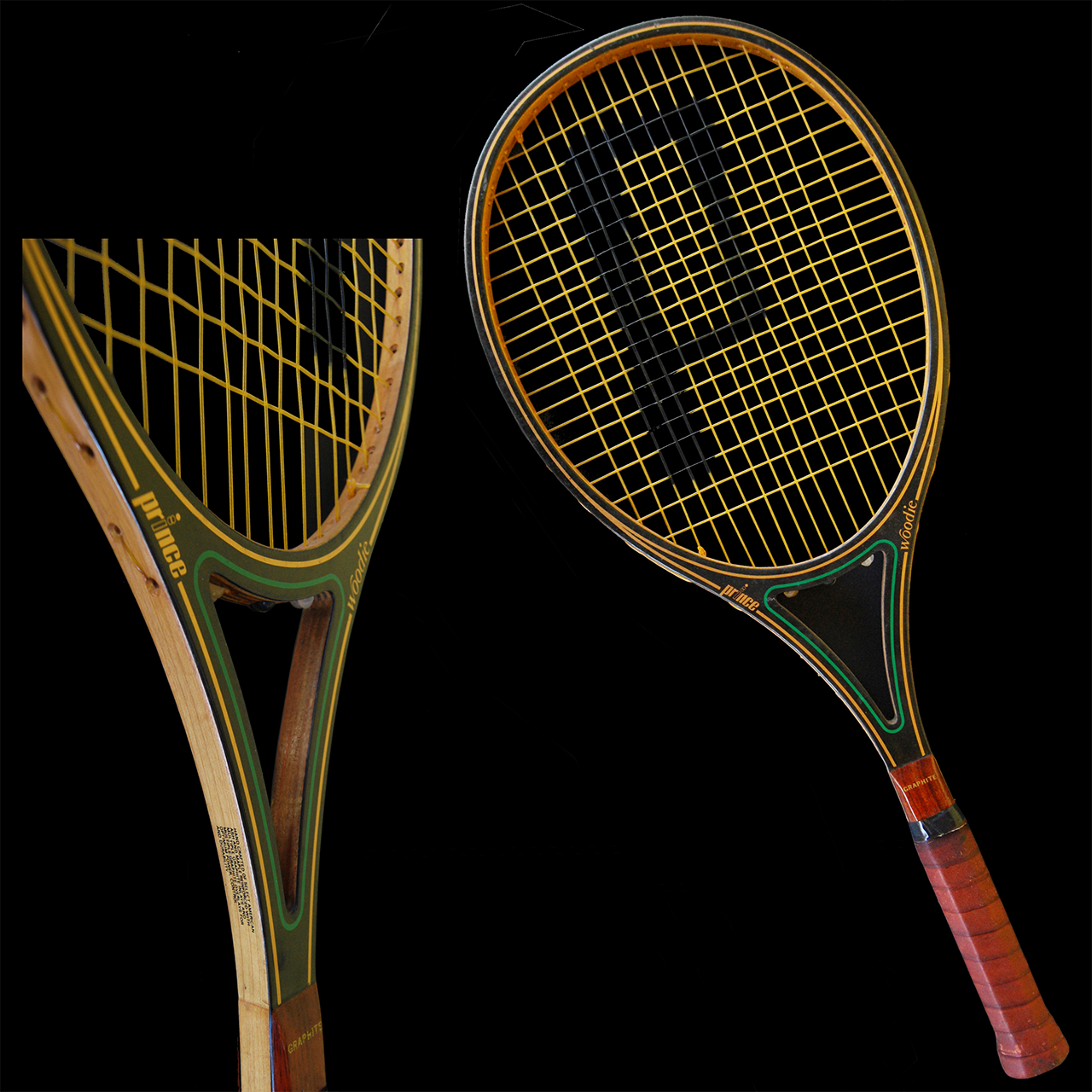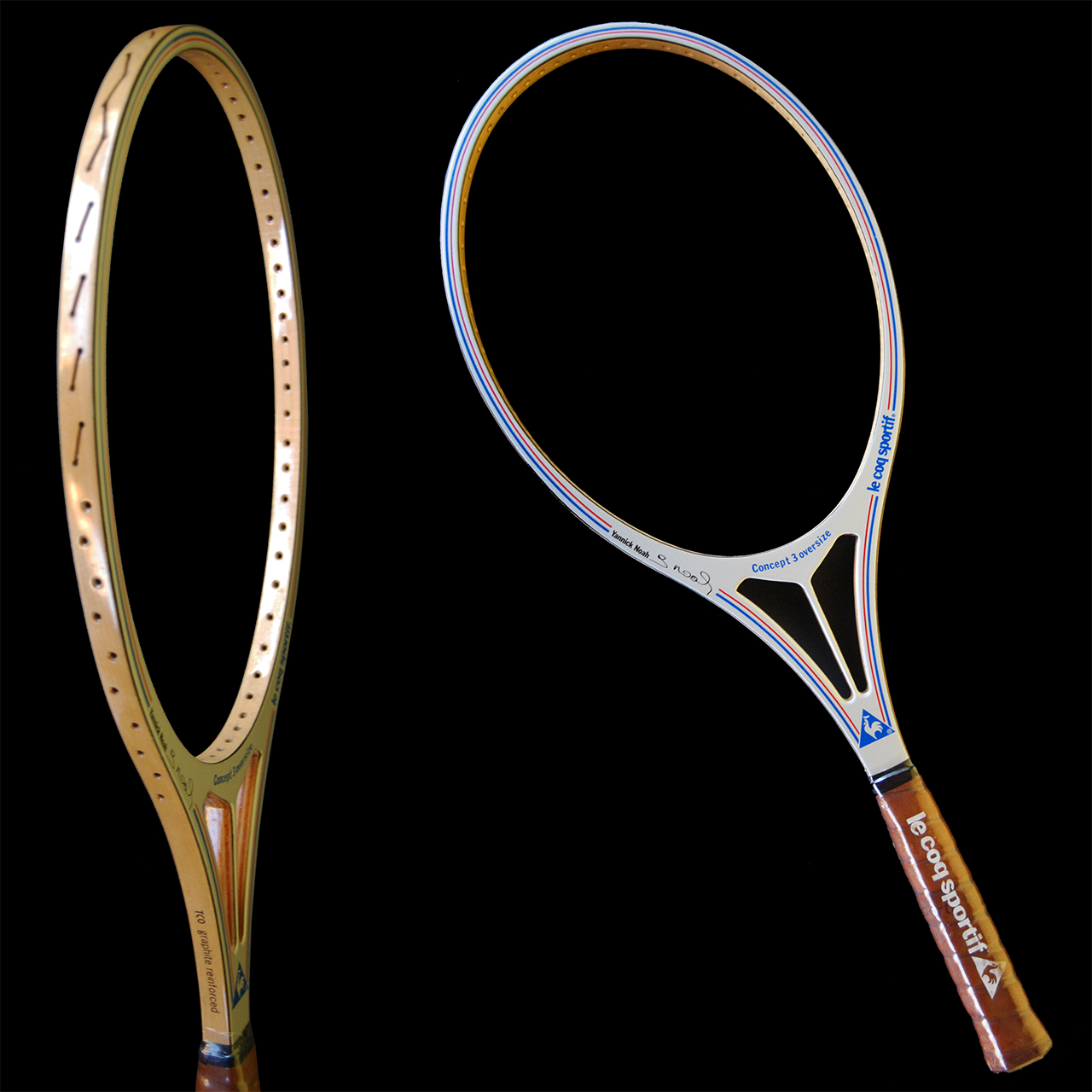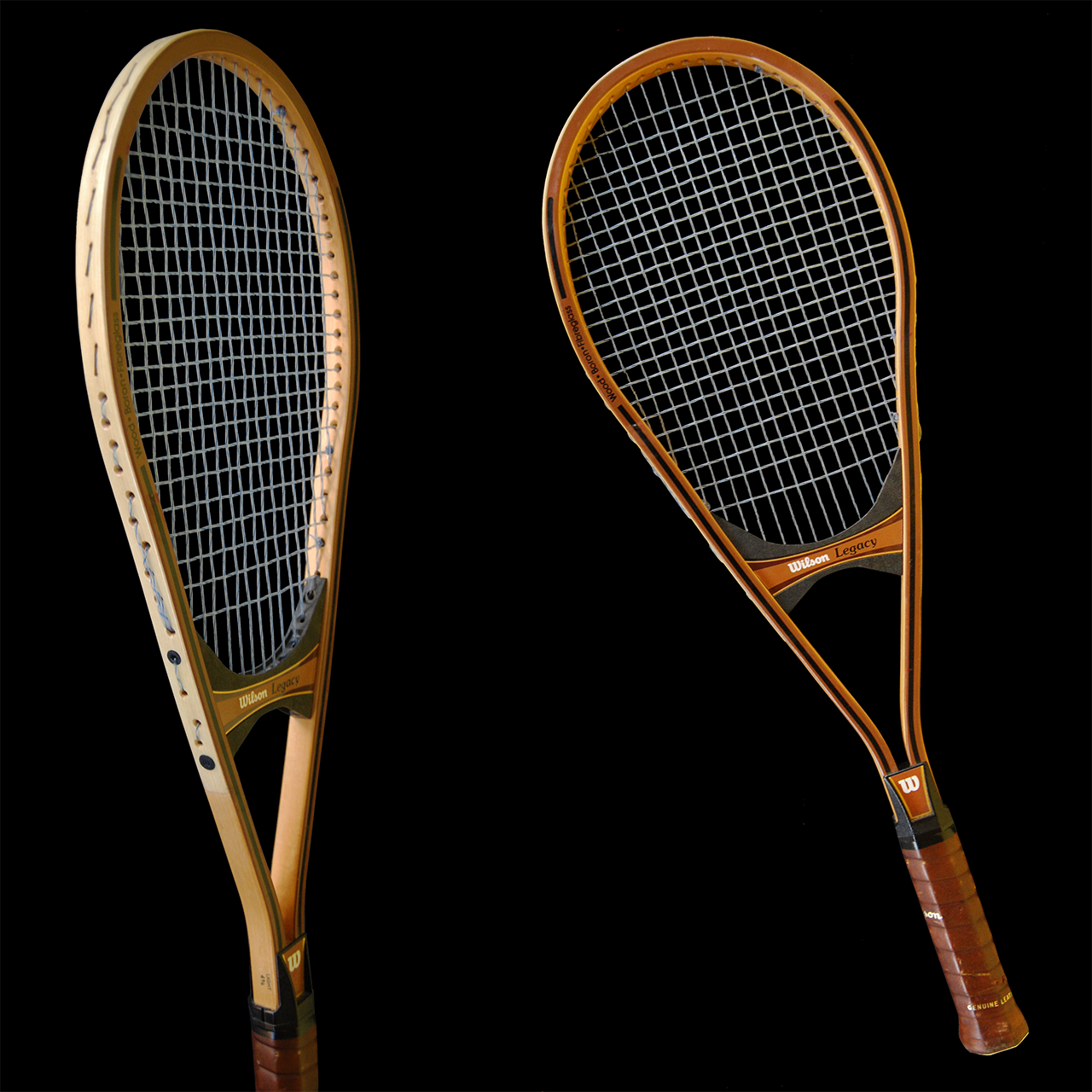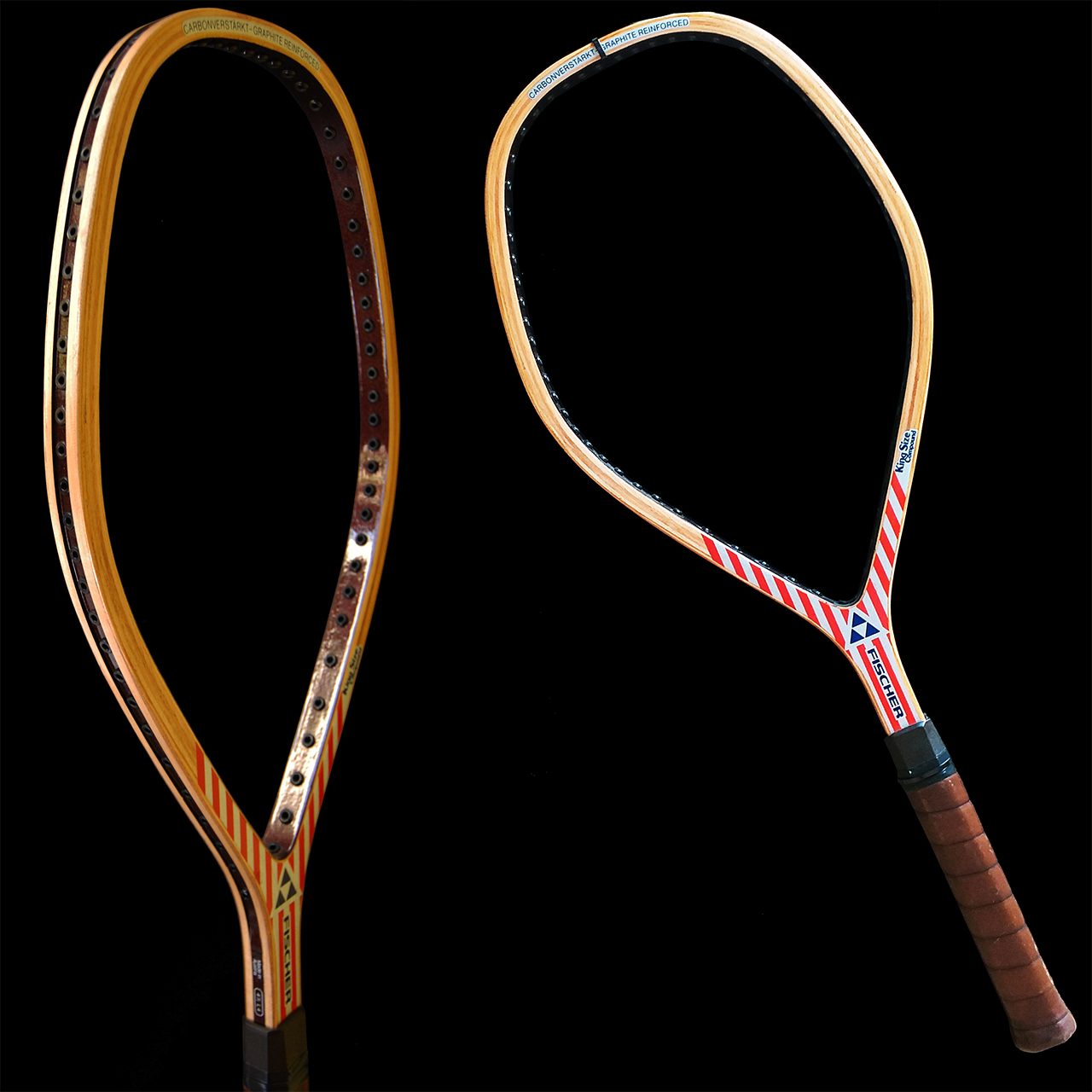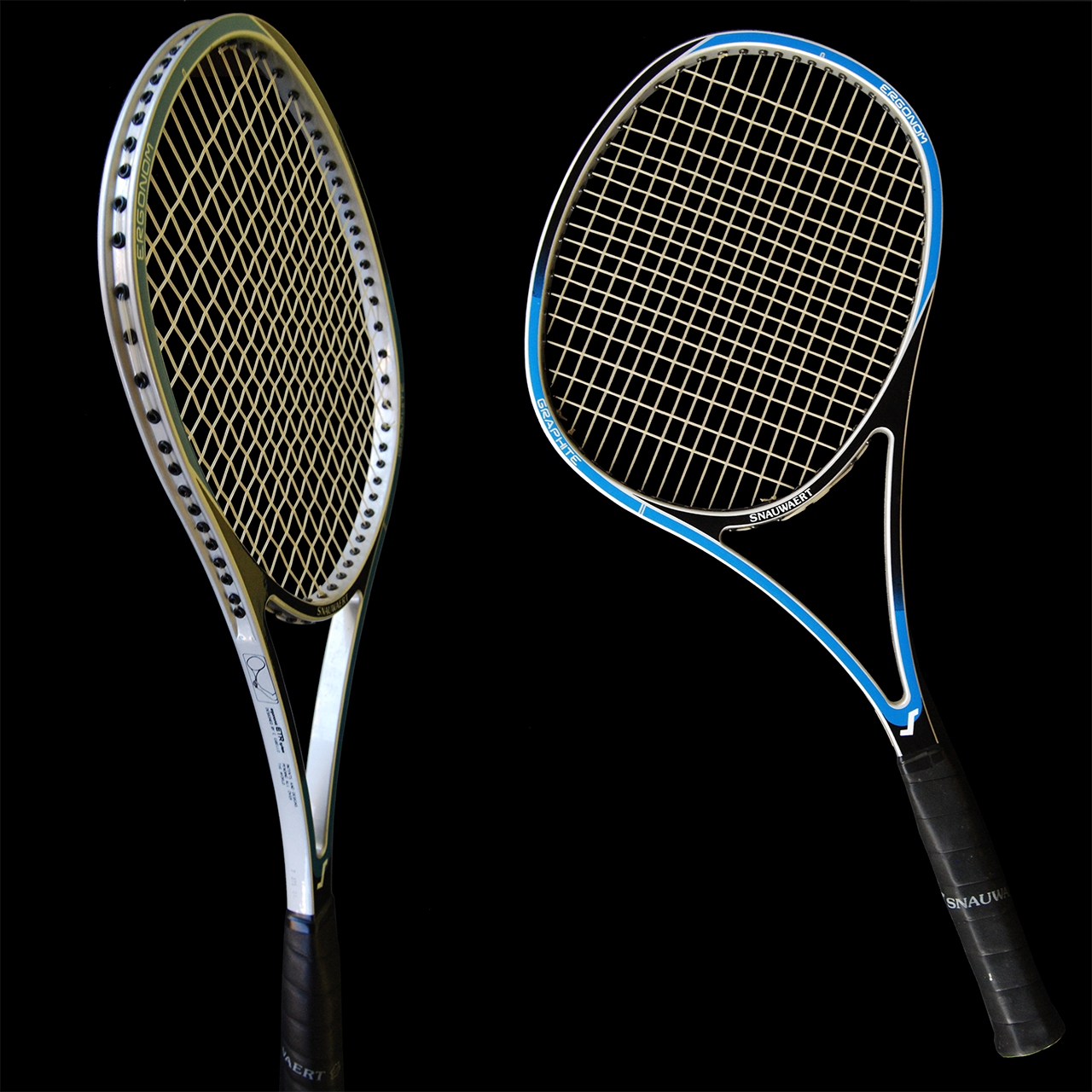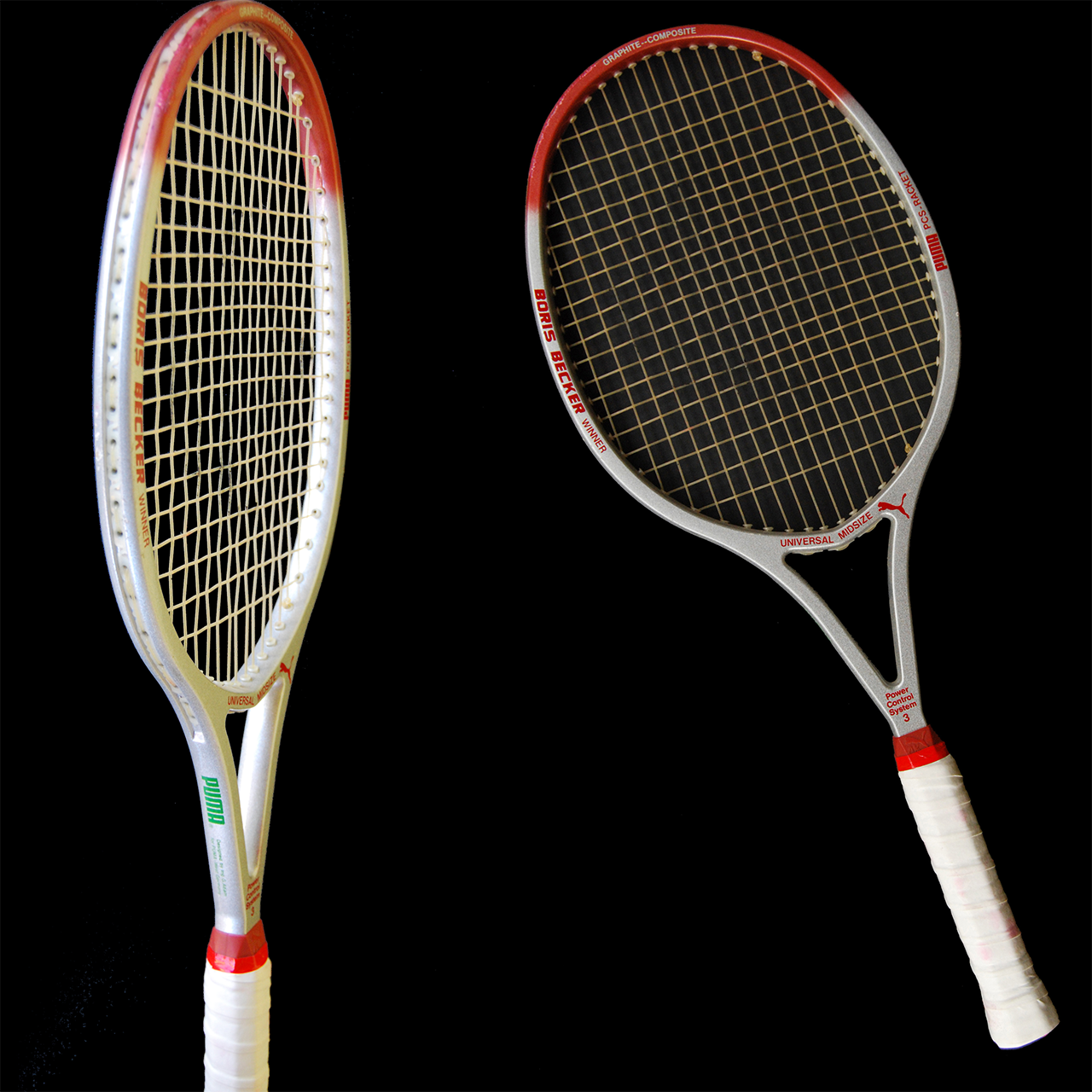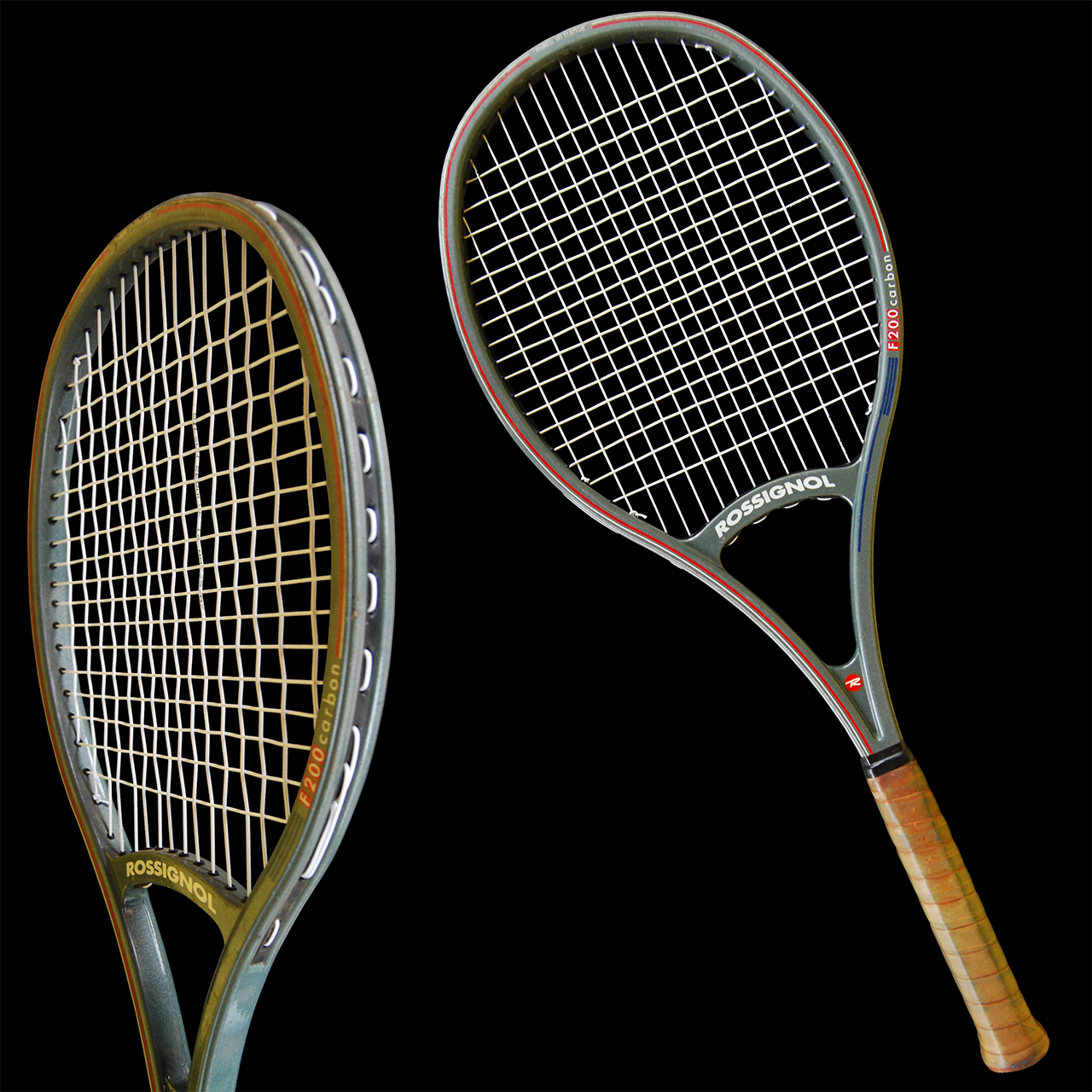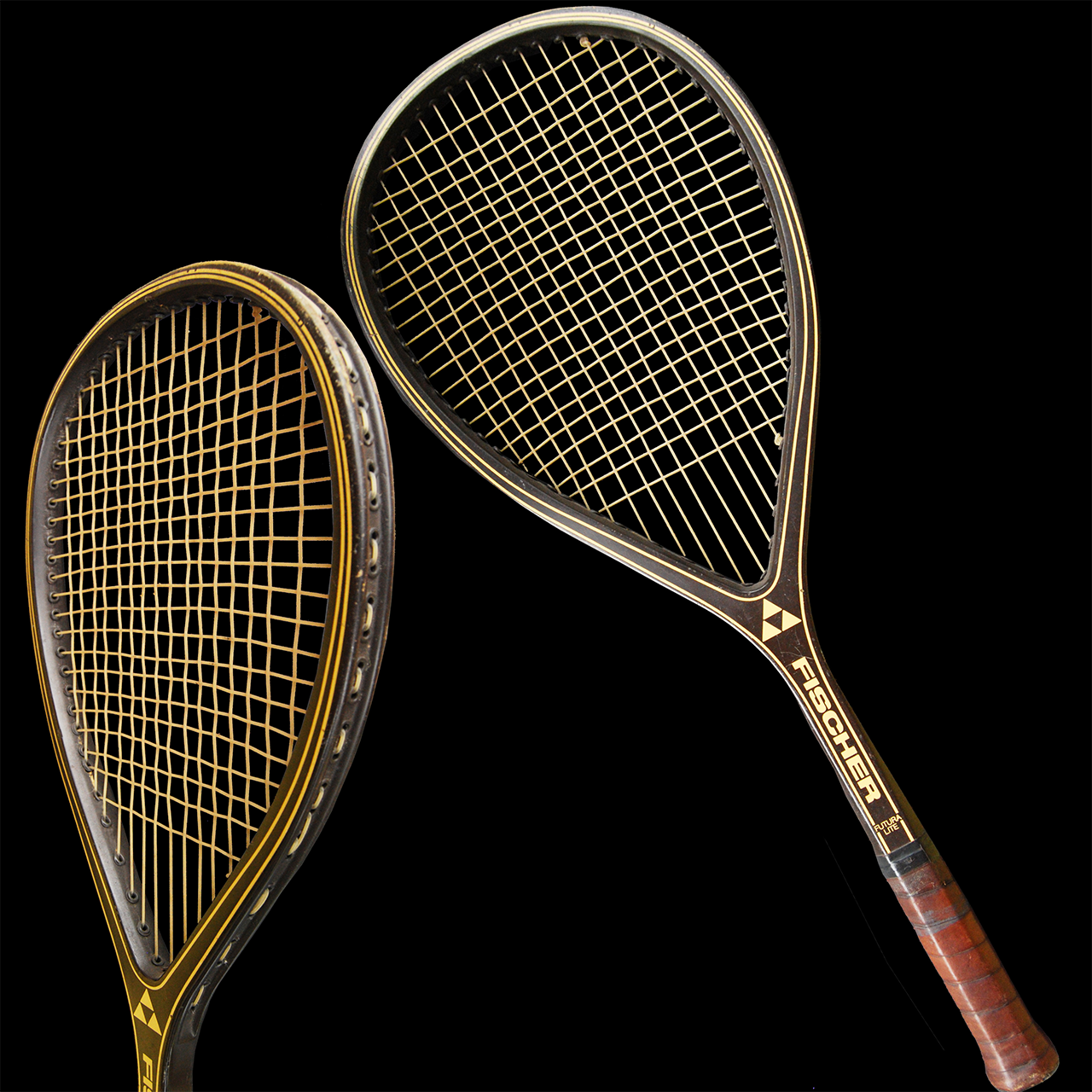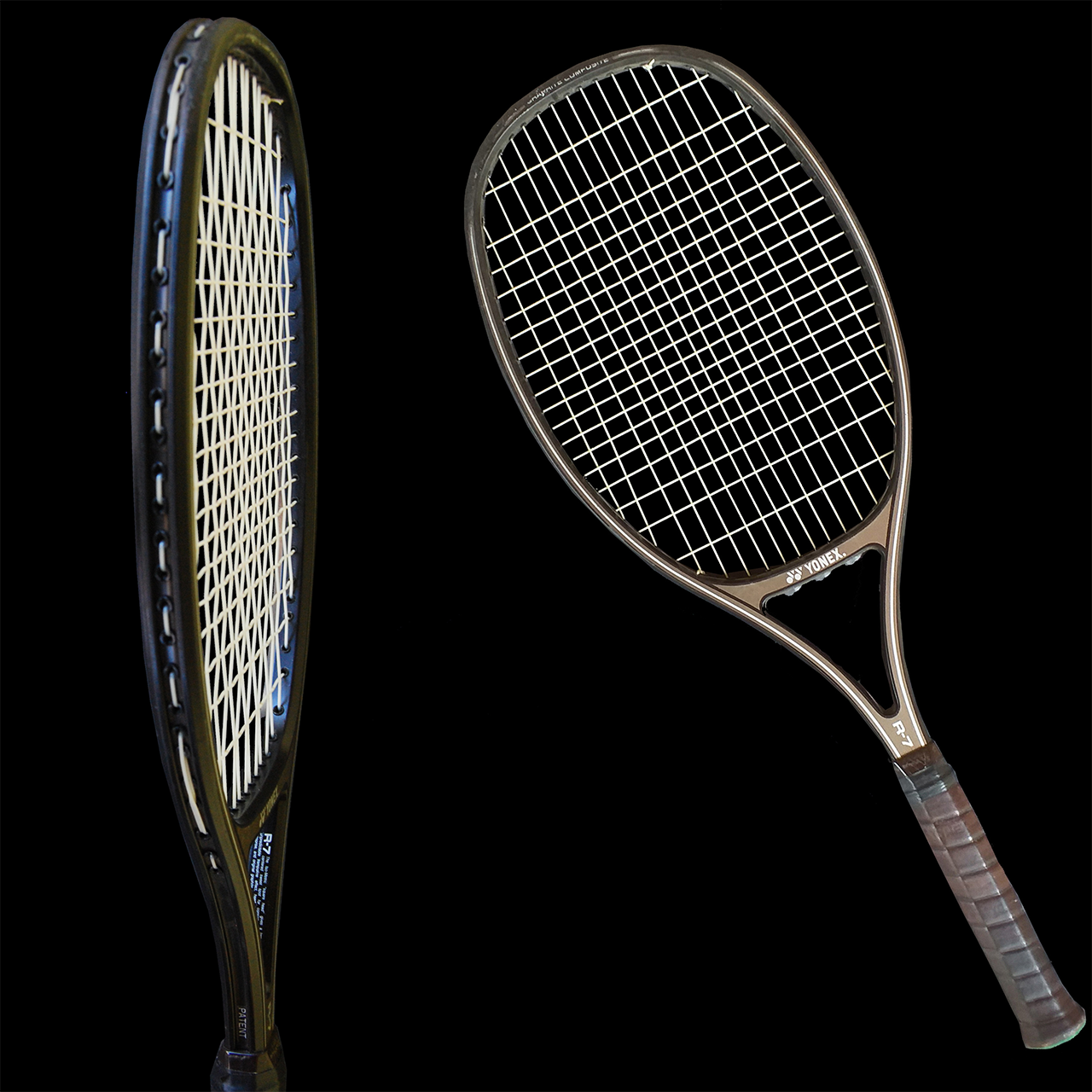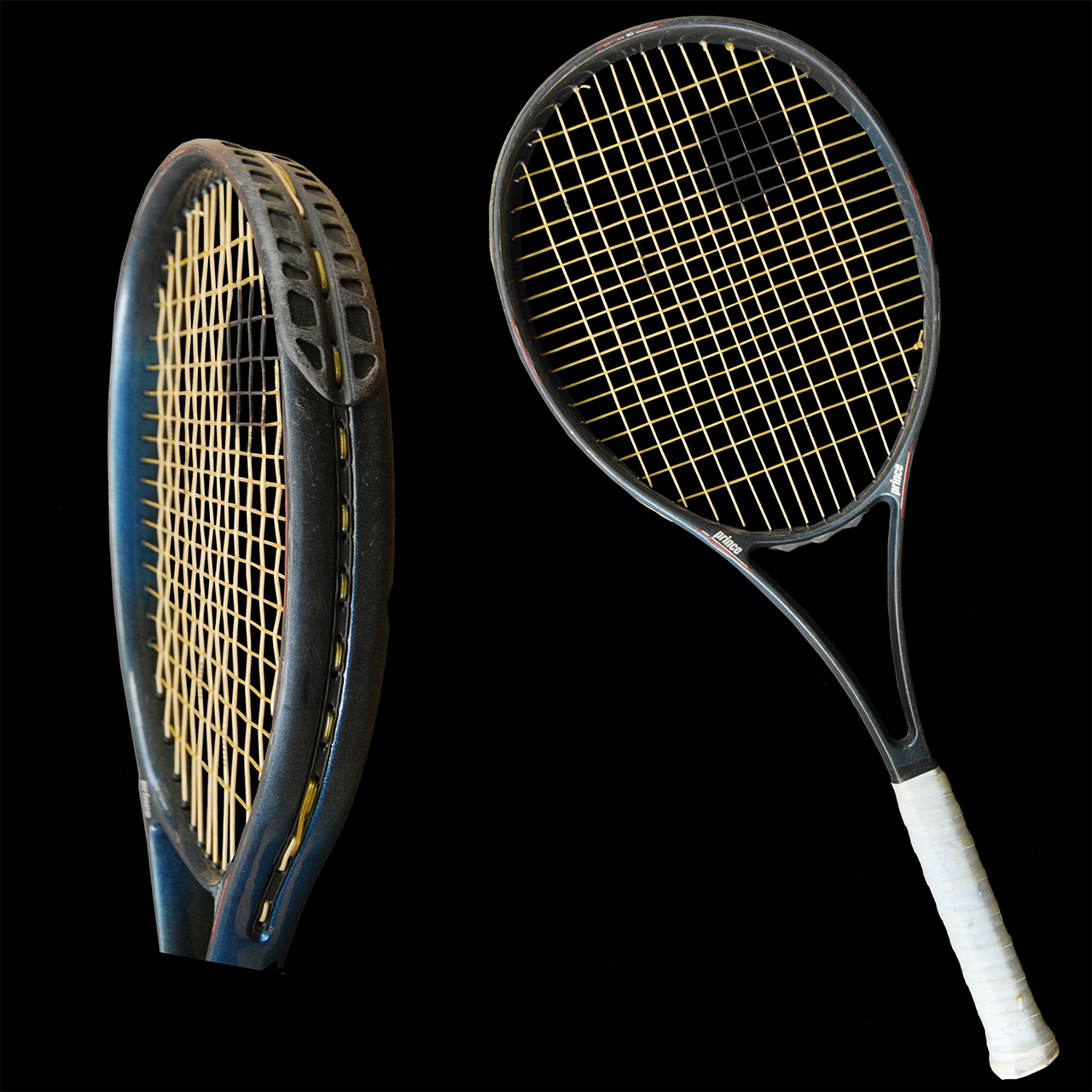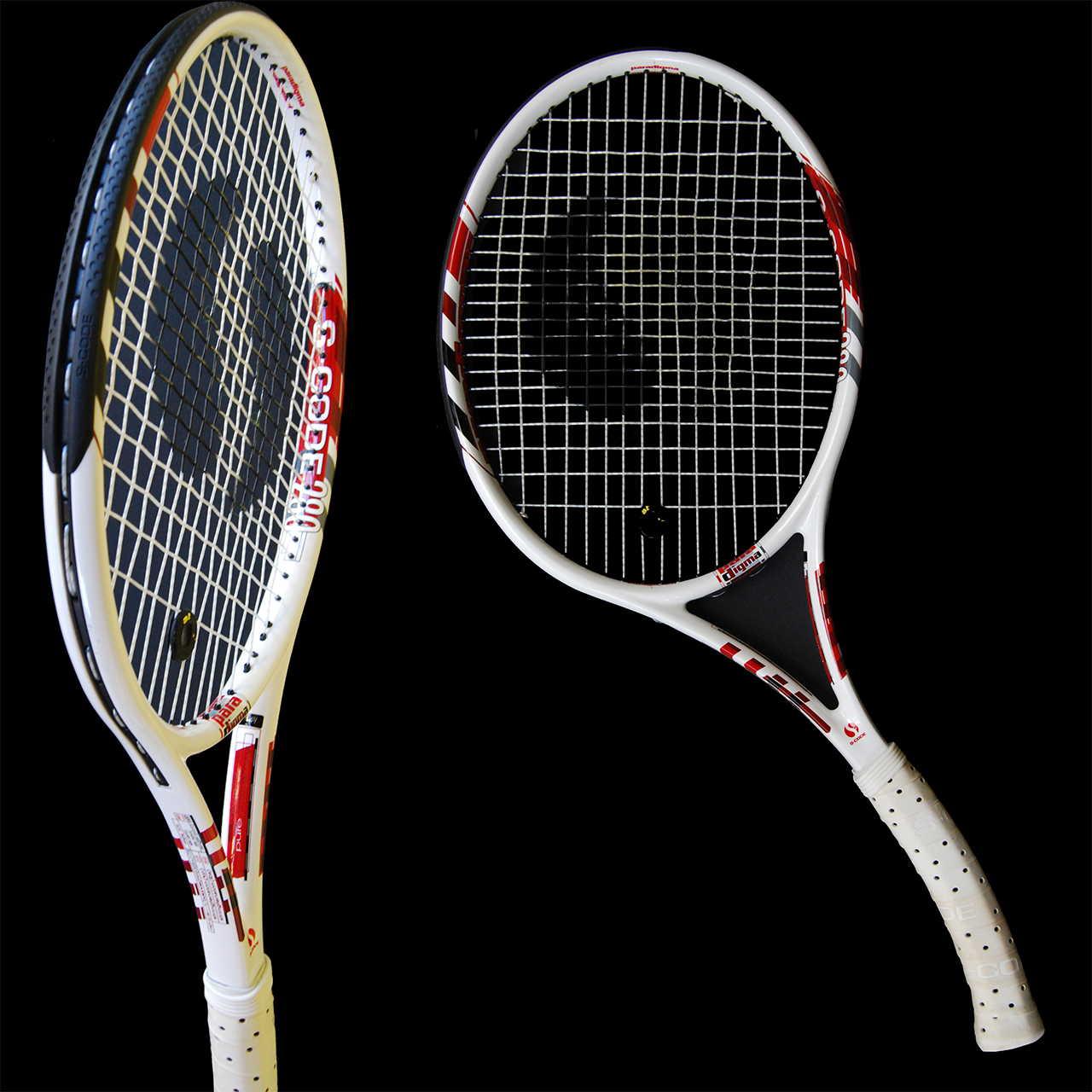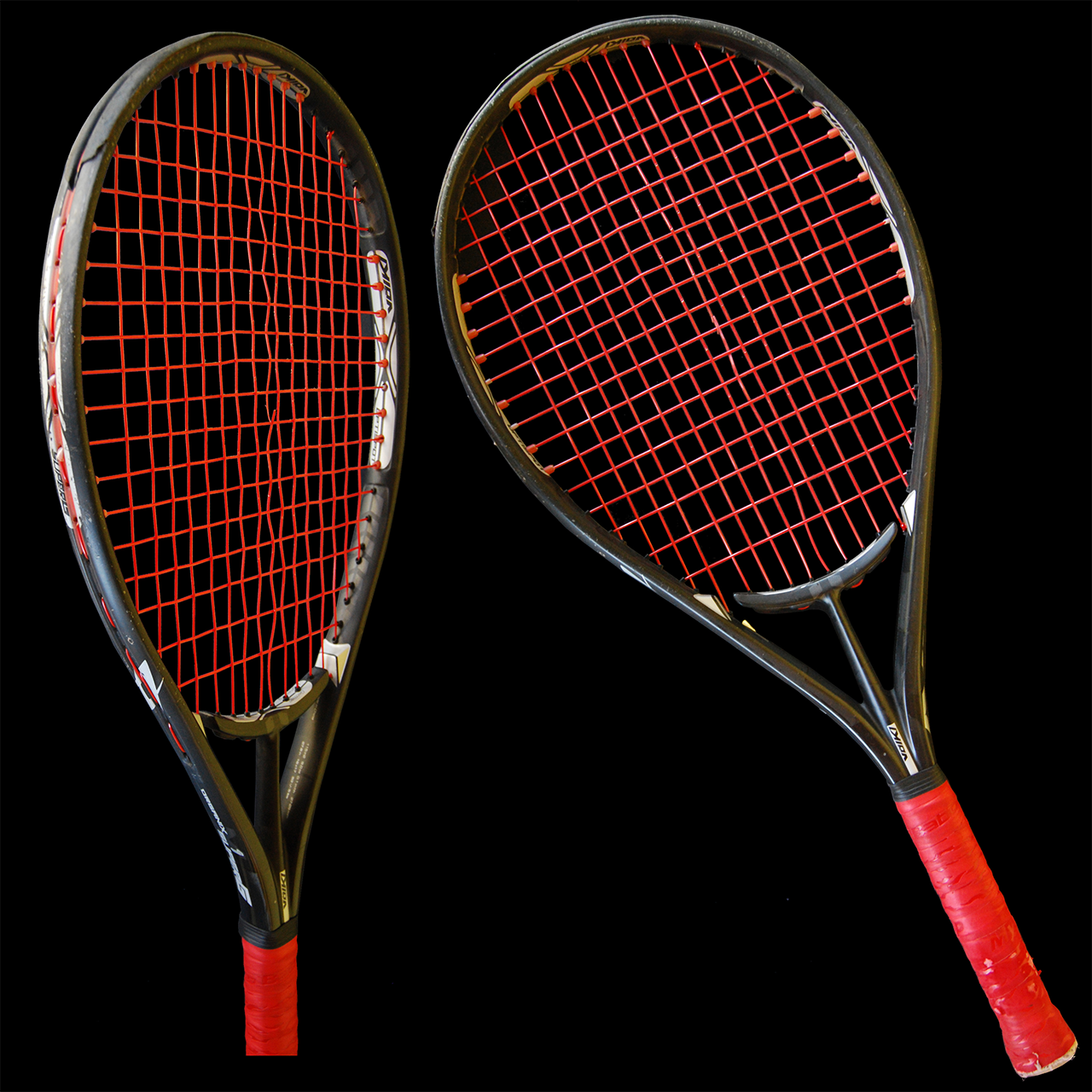HEAD & WEDGE VARIETIES
The Wright & Ditson All American 1933 and the Prince Woodie 1980 are two examples of open-heart wooden rackets. Prince, with the Woodie, achieved a high-performance oversize racket. With the introduction of metal, many brands manufactured rackets with open throats and concave bridges. The evolution of metal rackets is extensive, starting from the Birmal in 1924 to the latest models of the late ’80s, with numerous designs of the head and throat. The Grays Cambridge 1935 model is particularly interesting, as it combines a wooden head and grip with an iron throat. We can observe oval, round, pentagonal, drop-shaped, diamond-shaped, balloon-shaped models… always aiming to achieve an optimal power-to-impact ratio.
In these three models, Hazell’s Green 1937, Le Coq Sportif Concept 3 1982, and Volkl Super G1 2015, we can see an 80-year evolution of the trident-shaped heart of the racket. The design of the first sought lightweight and reinforcement of the heart to
prevent breakage, while the Volkl trident model with an open bridge aimed to achieve a soft impact and greater power.
We can observe many more inventions such as the Prince CTS Thunderstick 1989 with a thickness of 3.5 cm, the inclined head of the Snauwaert Ergonom, the curved grip of the Paradigma, and the symmetry achieved with the straight bridge of the Yonnex R7… all in search of the perfect balance of weight, power, control, and vibrations.
